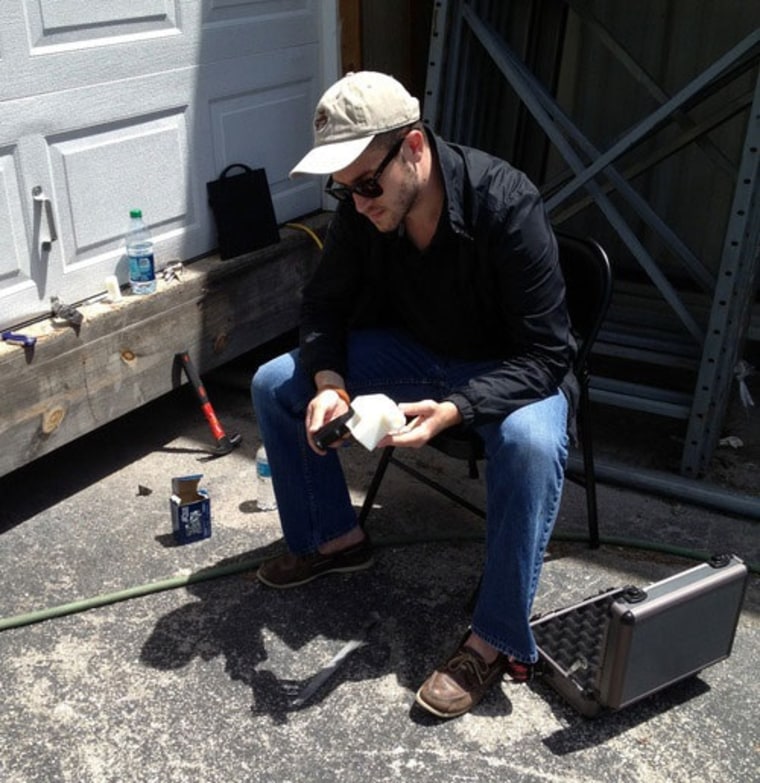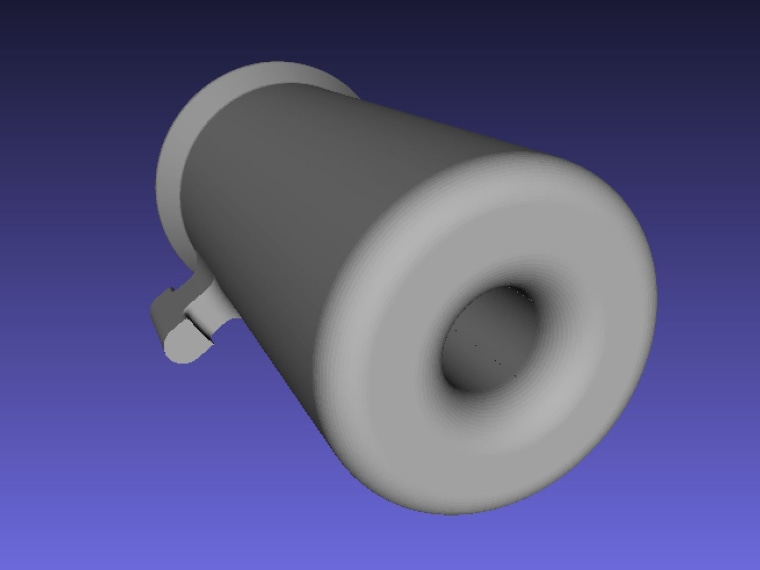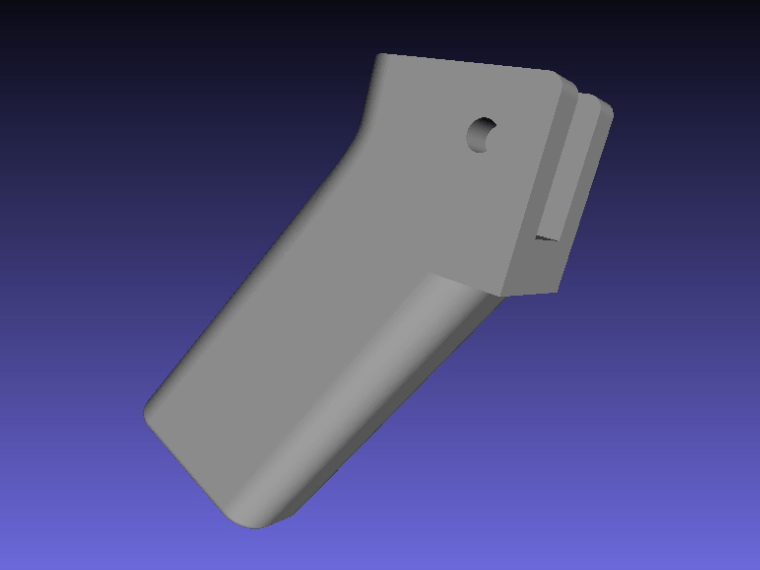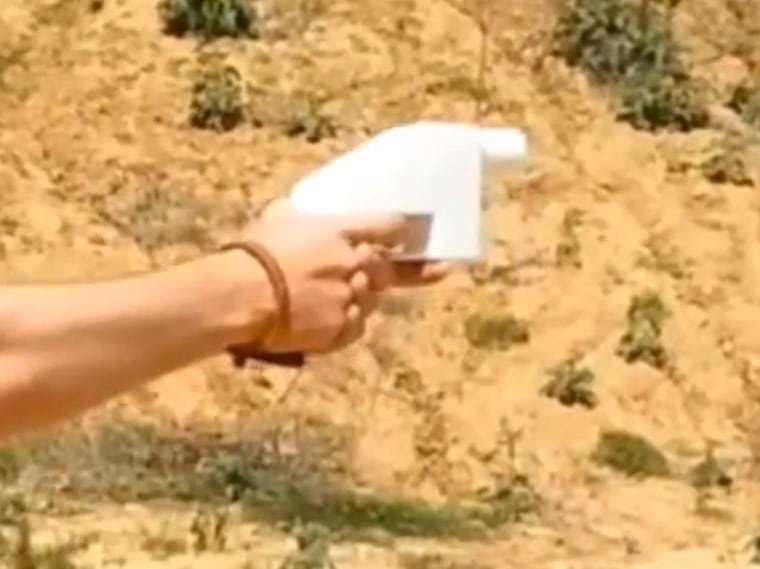
In the days since it first hit the Internet, the blueprint for “The Liberator,” the first known 3-D printed gun has been downloaded more than 70,000 times.
Spain led the download pack Monday evening, with the U.S. in close second. "This is a level I've never seen before," Cody Wilson, the provocateur behind not-for-profit 3-D gunsmith Defense Distributed, told NBC News. Probably most of the downloaders were (like us) people curious to see what a gun's blueprint looks like — a vast majority probably don't have the capability to print out one in plastic.
For as many people who hit up DefCad.com to download "The Liberator," even more came to look. At peak traffic, around 7 p.m. ET, DefCad.com received approximately 35,000 hits per hour, Wilson said. (Normally, a new blueprint attracts 1,300 hits per hour on average.) The Web administrator had to add mirror sites to keep the main site from crashing.
It’s no wonder. The latest success in Defense Distributed — designing a working gun made of 3-D printable parts — has made it the center of a new gun control debate in Washington. Following news of Defense Distributed’s latest success, Rep. Steve Israel, D-N.Y., and Sen. Chuck Schumer, D-N.Y., backed a bill entitled the Undetectable Firearms Modernization Act, meant to ban all-plastic 3-D printed guns and high-capacity magazines. The fact that these weapons are both homemade and harder to spot via metal detectors are the lawmakers' two chief concerns.
While Wilson is thrilled with the instant popularity of "The Liberator" blueprints, it's this reaction he considers the real success. "That’s how I know I'm doing something good — these New York Democrats are doing something against it," said Wilson, who is a a law student as well as a self-identified crypto-anarchist. For Wilson, the ongoing project is about politics, and the "good" he's referring to, in his opinion, is testing and revealing the limits of the law.

The alarm over the possibility of a plastic gun passing through a metal detector is misleading, says Wilson, citing the law itself. "Metal detectors are only half of the Undetectable Firearms Act," he said, noting that it also outlaws firearms that don't appear on an X-ray machine or body-imaging sensors. "If you see ["The Liberator"] pass through an X-ray machine, it's obvious what it is," Wilson said.
Wilson calls out Schumer for eschewing current laws and instead aiming to outlaw certain use of a 3-D printer, when the technology itself has yet to be fully realized. "He's trying to control a future he can't control," Wilson said. "That’s what this tool represents to me, uncertain unplanned future against central planning." Which is exactly what you'd expect an anarchist to say.
Schumer, however, is also doing what legislators are expected to do: Work on laws now that will protect citizens in the future. But U.S. is a nation of tinkerers, from Ben Franklin on down, and if Wilson and Defense Distributed didn't make a 3-D printed gun, somebody else would have. It could've happened already for all we know, built by someone without Wilson's penchant for chaos and publicity — a guy looking for a reaction, and getting it in spades.

"It's not that I'm doing any thing bad or evil, it's that it's scary and it can't be controlled." True enough,"The Liberator" blueprints have already moved beyond the DefCad.com database, seeded several times on the file-sharing site Pirate Bay, Wilson pointed out. "It's in the fabric of the Internet." In other words, no takedown request from government authorities would work — even if posting a free gun blueprint on the Internet was against the law.
The attention is also earning money for Defense Distributed. In the wake of the "Liberator," Defense Distributed has seen a spike in donations, raising approximately $3,000 via PayPal and several hundred dollars worth of the cyber-currency, Bitcoin. Though he won't share specific numbers, Wilson also says that the increased traffic to the website has generated enough Google ad revenue to buy a new industrial 3-D printer. He won't disclose that amount, but those machines cost upwards of $10,000.
Currently, "The Liberator" requires an industrial-level 3-D printer, and training to work it. The next step for Defense Distributed is modifying the design for use in a less-expensive hobbyist 3-D printer.
Helen A.S. Popkin is Deputy Technology & Science editor for NBCNews.com and TODAY. You can find her on Twitter and Facebook.
